Key takeaways
- 3D printing allows for precise and intricate designs that enhance the realism of sci-fi props, making them feel authentic.
- The technology has become accessible, enabling hobbyists to experiment and quickly prototype their ideas, fostering creativity.
- Selecting the right materials and tools is crucial for achieving durability and an authentic appearance in prop making.
- Designing digitally enables rapid iteration and the ability to balance aesthetics with practical functionality in props.
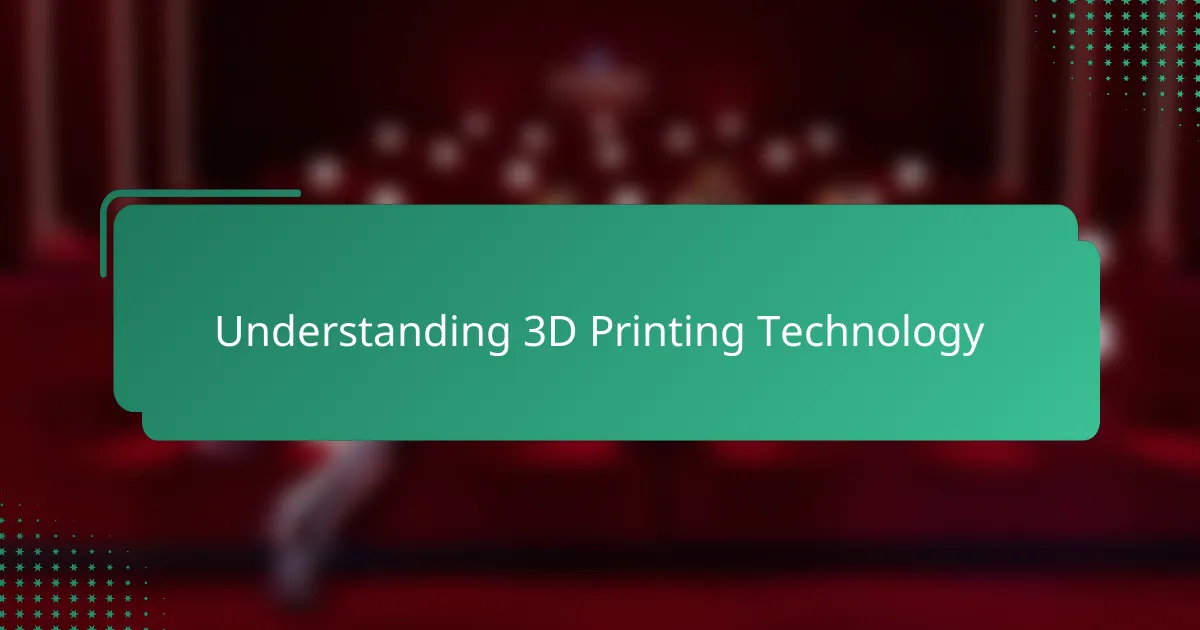
Understanding 3D Printing Technology
When I first got into 3D printing, I was fascinated by how it builds objects layer by layer from a digital model. It’s like watching a machine bring an idea to life in real time, which felt almost magical to me. Have you ever thought about how this process compares to traditional crafting methods?
Understanding the technology means grasping the types of materials used, like plastics or resins, and how each affects the final look and feel of a prop. From my experience, choosing the right material can completely change how a prop behaves on set—some feel solid and heavy, while others are surprisingly lightweight yet durable.
What really struck me is how accessible 3D printing has become. I remember when it was mostly for industrial use, but now, hobbyists and prop-makers can experiment and iterate quickly in their own studios. This accessibility opens up creative possibilities I hadn’t imagined before.

Overview of Science Fiction Props
Science fiction props have always fascinated me because they bring imaginative worlds to life in tangible ways. These objects aren’t just about aesthetics; they tell stories about advanced technology, alien cultures, or futuristic societies. When I handle a well-crafted sci-fi prop, I feel like I’m holding a piece of that universe, which makes the experience incredibly immersive.
Over the years, I’ve noticed that the complexity of these props can vary widely, from simple gadgets to intricate devices covered in tiny details. This level of craftsmanship requires not only creativity but a deep understanding of how materials and design work together to create believable artifacts. Have you ever wondered what makes a prop feel “real” rather than just a costume accessory? For me, it’s all about those subtle touches that hint at functionality.
What excites me most is seeing how science fiction props evolve with technology. Traditional methods like sculpting and molding have given way to digital design and fabrication techniques, expanding what’s possible. It’s thrilling to think about how these advances might shape the props of tomorrow and what new stories they’ll help us tell.
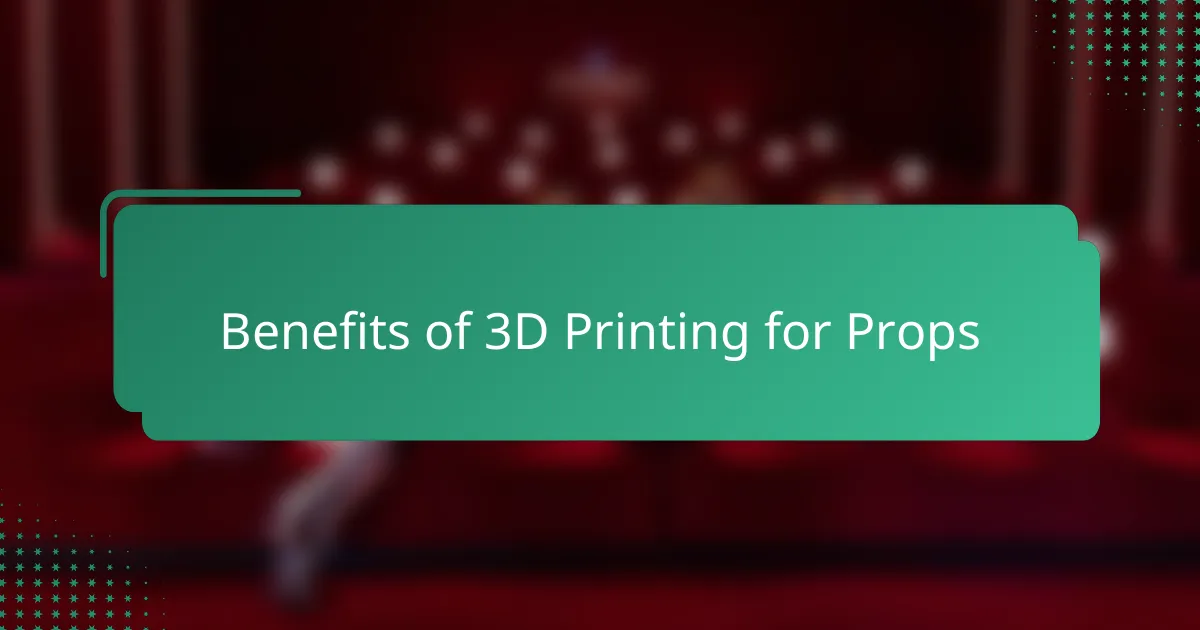
Benefits of 3D Printing for Props
One of the biggest benefits I’ve found with 3D printing for props is the incredible precision it offers. When you’re trying to capture the fine details that bring a sci-fi gadget to life, traditional handcrafting can sometimes fall short. But with 3D printing, those tiny engravings and textures come out sharp and consistent—almost like the prop itself is a high-tech relic from another world.
Another thing I really appreciate is how 3D printing speeds up the prototyping process. Instead of spending days or weeks sculpting and reshaping, you can design your prop on a computer and have a physical version in your hands within hours. Have you ever faced the frustration of trying to fix a prop’s shape by hand? For me, being able to iterate quickly means I can try out bold ideas without worrying about wasting precious materials.
Lastly, the variety of materials available for 3D printing has opened up new creative doors. From lightweight plastics that won’t weigh me down during a convention to tougher resins that survive intense on-set action, I feel like I have the freedom to match the prop’s purpose perfectly. It’s like having a custom toolkit tailored exactly to the story I want to tell. Have you noticed how a prop’s feel can make or break its believability? For me, that tactile authenticity makes all the difference.
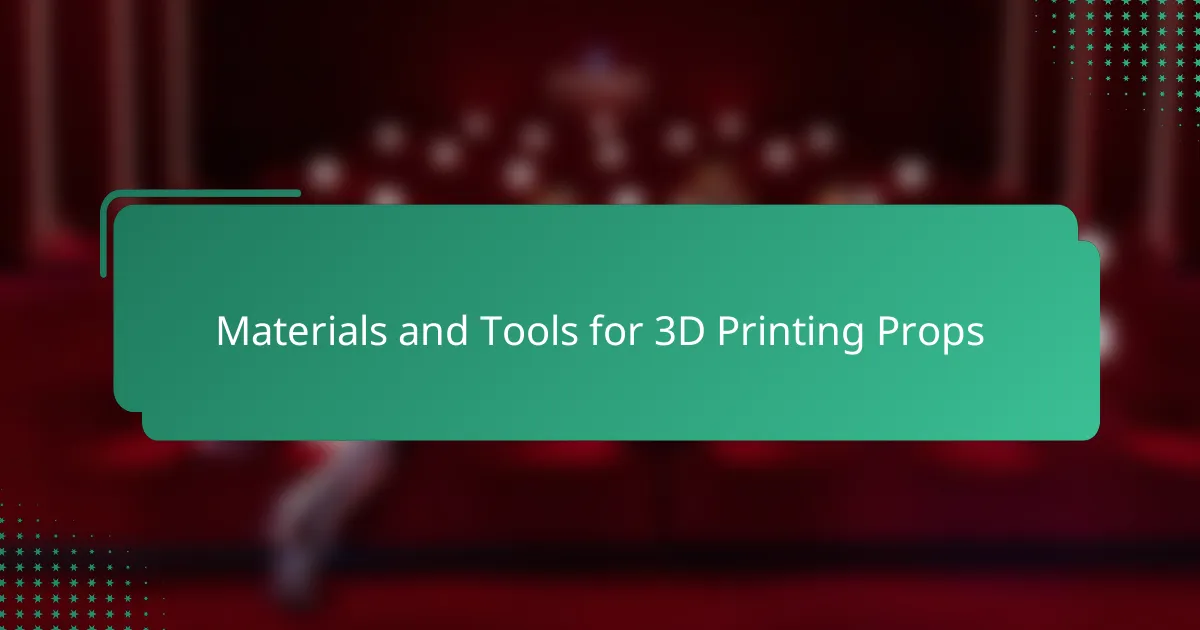
Materials and Tools for 3D Printing Props
When I first started selecting materials for my sci-fi props, I quickly learned that PLA plastic is a great all-rounder—easy to print and sturdy enough for most display pieces. But if a prop needs to have a bit more durability or a smoother finish, I often switch to resin printing, which captures details like tiny circuits or alien symbols with amazing clarity. Have you ever noticed how the right material can make the difference between a prop that feels plastic and one that feels almost real?
Choosing the right tools also plays a huge role in my printing process. I swear by having a reliable 3D printer with a heated bed and good resolution; it saves me hours of frustration and post-print sanding. Plus, I keep a basic toolkit handy—like precision knives and fine-grit sandpaper—for those moments when a tiny imperfection threatens to ruin the illusion. It’s these small touches that, in my experience, elevate a simple print into a convincing piece of sci-fi tech.
Sometimes, I experiment with combining materials—like printing rigid parts and then adding flexible sections using TPU filament to mimic wearables or cables. This mix keeps the props comfortable to wear during long shoots while staying true to the futuristic aesthetic. Do you think a prop’s functionality matters as much as its looks? For me, balancing both with the right materials and tools is what truly brings a piece to life.
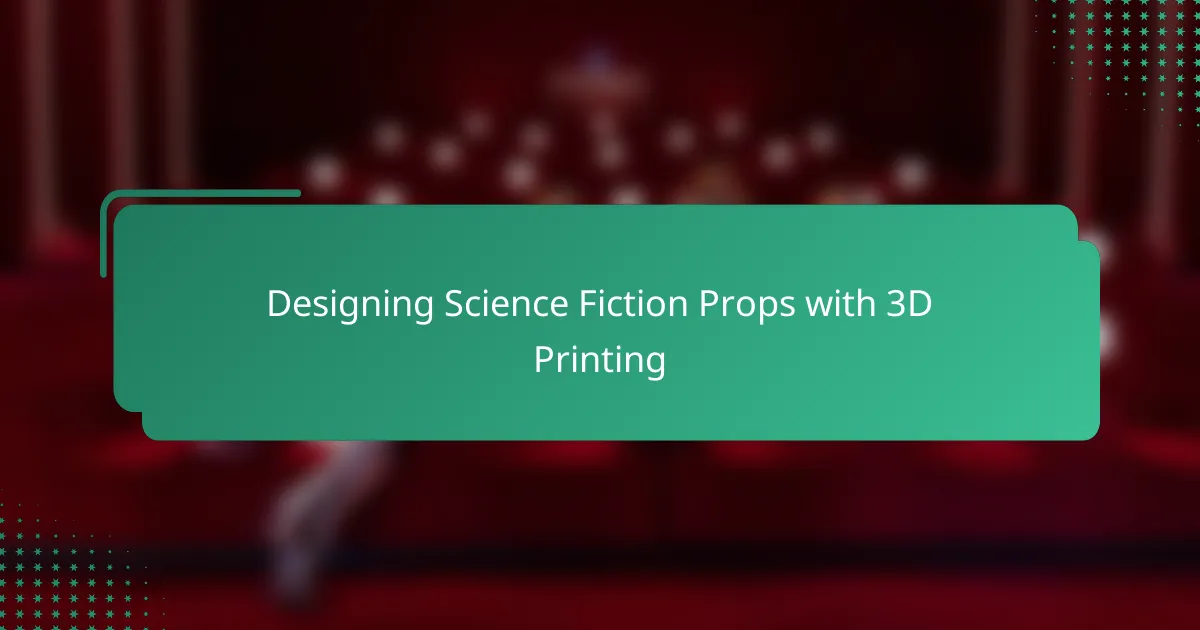
Designing Science Fiction Props with 3D Printing
Designing science fiction props with 3D printing has transformed how I approach creativity. Instead of being limited by my sculpting skills, I can sketch out a concept digitally and watch it take shape layer by layer—a process that feels both technical and deeply personal. Have you ever felt the thrill of seeing a digital blueprint transform into a tangible object right before your eyes? For me, that moment never loses its wonder.
I’ve also found that designing in 3D allows me to experiment boldly without fear of ruining precious materials. Adjusting a shape or adding intricate details is just a few clicks away, which encourages me to push the boundaries of what a prop can be. It’s exciting to think about how these digital tools bridge imagination and reality, letting me craft sci-fi gadgets that feel genuinely futuristic yet grounded in physical presence.
One thing I’ve learned is how crucial it is to balance aesthetics with practicality during the design phase. A prop might look incredible on screen, but if it’s uncomfortable to handle or fragile on set, that magic fades quickly. Have you ever held a beautifully detailed prop that just didn’t “fit” in your hands? Designing with 3D printing gives me the control to fine-tune size, weight, and ergonomics early on—making every piece not just a visual marvel, but a joy to use as well.
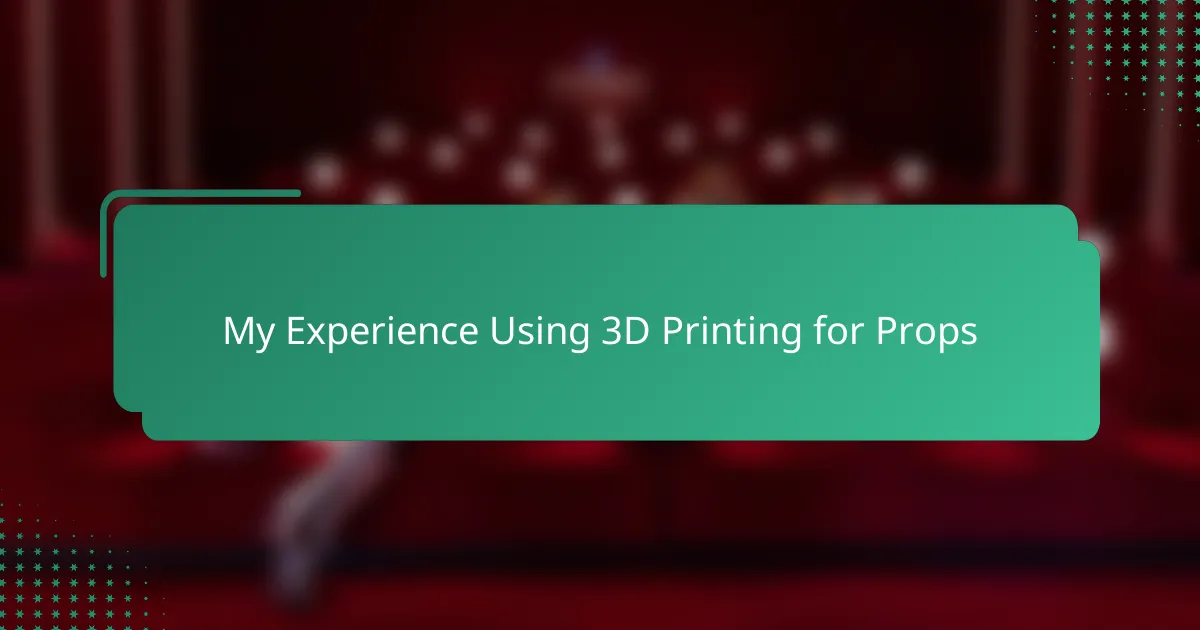
My Experience Using 3D Printing for Props
When I first tried 3D printing for props, I was both excited and a bit overwhelmed. The feeling of watching a digital design gradually transform into a physical object in my own workshop was incredibly rewarding—it made all those late nights designing feel worthwhile. Have you ever experienced that mix of anticipation and satisfaction when something you imagined starts to take real shape right before your eyes?
One memorable project was a complex sci-fi blaster with delicate detailing that I didn’t think I could replicate by hand. Using 3D printing, those tiny engravings came out crisp and precise, which really boosted my confidence in the technology. I realized then how much more intricate and professional my props could look without spending endless hours sculpting and sanding.
At the same time, I learned that patience is key. Sometimes prints fail or require multiple tries to get the finish just right, and that’s part of the process. Hasn’t it happened to you, where frustration almost takes over but pushing through leads to that perfect piece? For me, embracing these challenges has made each successful print even more satisfying.


